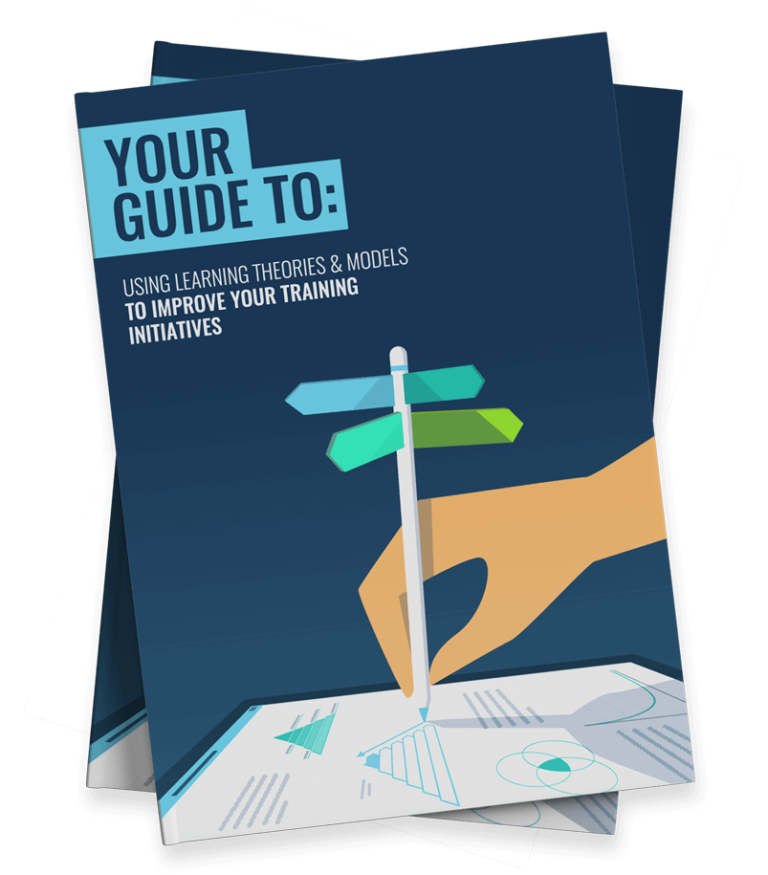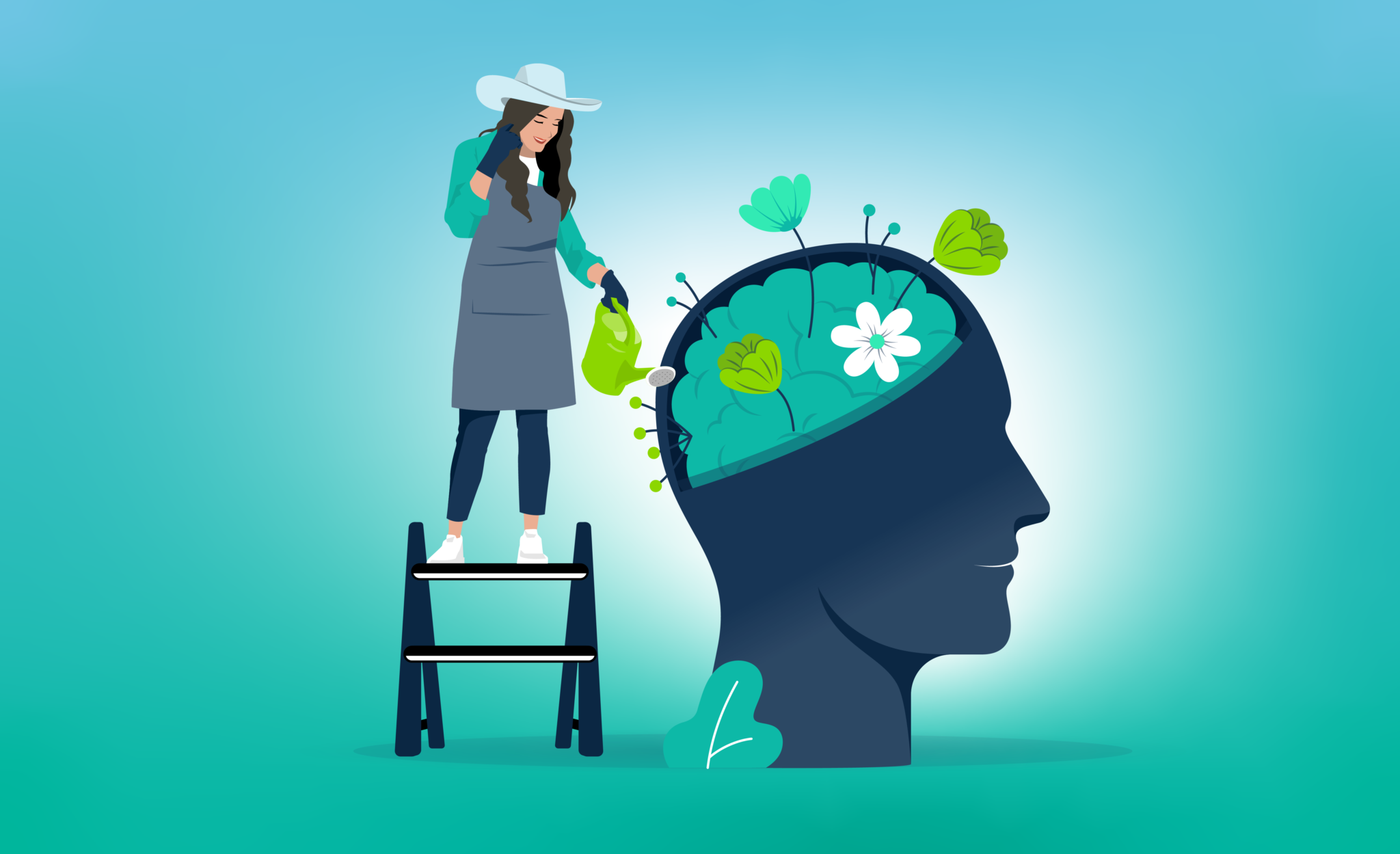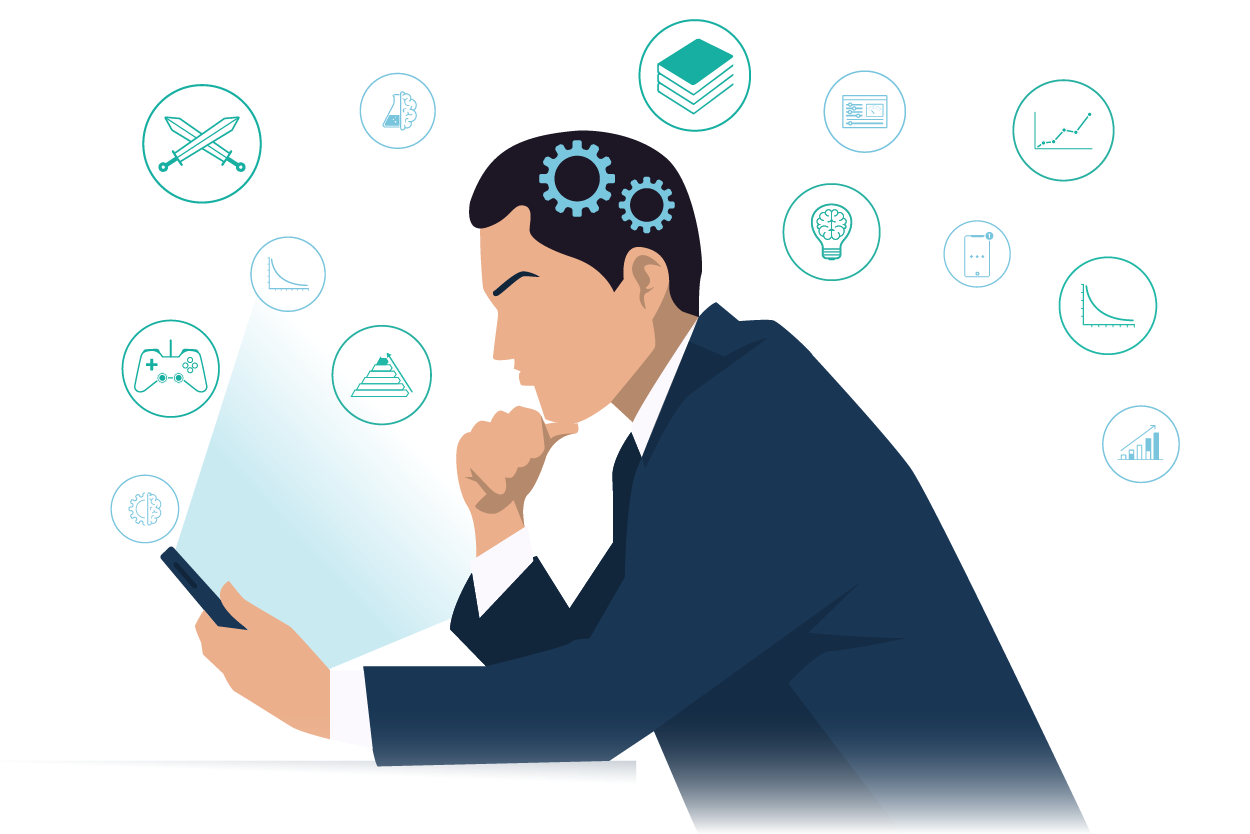 When Howard Gardner first introduced his theory of multiple intelligences it shook the academic world. After all, it challenged prevailing beliefs about intelligence and how we learn best.
When Howard Gardner first introduced his theory of multiple intelligences it shook the academic world. After all, it challenged prevailing beliefs about intelligence and how we learn best.
Perhaps you’ve heard about Gardner’s theory of multiple intelligences, but you aren’t sure about the finer details. Or maybe this is the very first time you’re reading about it. Either way, this is an important theory. This MI model might just be the key to unlocking the hidden powers of your learners.
To give you a better idea, here are a couple of things to ponder.
- Why do some learners perform better in written tests, while others prefer practical assessments?
- Why does a standardised training approach often fail to engage all kinds of learners?
The answer is simple. Each individual possesses different intelligences which they use in learning. This theory can help you to acknowledge these differences.
Better yet, it will help you tailor your learning approach to suit each type of intelligence. In turn, your learners will engage more with your training materials, which will ultimately lead to better learning outcomes and business impact.
In this article, we’ll learn more about Gardner and his theory. We’ll then explore his model within an L&D context. You’ll also learn how to apply the theory of multiple intelligences to help supercharge your learning initiatives.
Gardner’s Theory of Multiple Intelligences

Who is Howard Gardner?
Howard Gardner is an American psychologist, distinguished Harvard professor and writer. He’s prolific — he has written hundreds of articles and thirty books throughout his career. He shook-up traditional learning and development approaches when he detailed his theory of multiple intelligences in his 1983 book, ‘Frames of Mind‘.
You see, Gardner had a mission. He wanted to reorient the way we learn. Specifically, he believed that the prevailing methods of instruction failed to maximise learners’ potential.
In particular, he faulted standardised assessments which assess one type of intelligence at the expense of others. This approach fails to consider the unique strengths of different types of learners. And this is what took him on the journey to establish the theory of multiple intelligences.
As such, this is what catapulted him to ‘rockstar’ status in the academic world. His work inspired many theorists and educators to question how we define intellect and how we should approach learning challenges.
Now that you know the man behind the theory, let’s take a closer look at the theory itself.
What is Gardner’s Theory of Multiple Intelligences (MI)?
We are all probably familiar with the concept of “IQ” or “intelligence quotient”. After all, this is the stuff that SAT tests and many pre-employment exams are made of.
IQ traditionally measures a single form of intelligence, based on a person’s reasoning ability. However, this is the kind of approach that Gardner’s theory is heavily opposed to. After all, this kind of approach is mostly based on how well someone can use their verbal and logical abilities to correctly answer questions.
Of course, there are people who do extremely well on these tests. As a result, they gain entry to the most prestigious schools and often go on to join the biggest and best organisations. But what about everybody else? Does failing a standardised test mean you aren’t intelligent enough? Is success in school or in the workplace reserved only for the high scorers?
Multiple intelligence theory answers this question with a definite and resounding ‘no’!
It proposes that there are multiple types of intelligence, which can be measured in different ways. Understanding this also helps to highlight the different ways that humans absorb, process and apply knowledge. Particularly, the theory’s first publication and its sequels identified eight distinct intelligences. Here’s an overview of each of them.
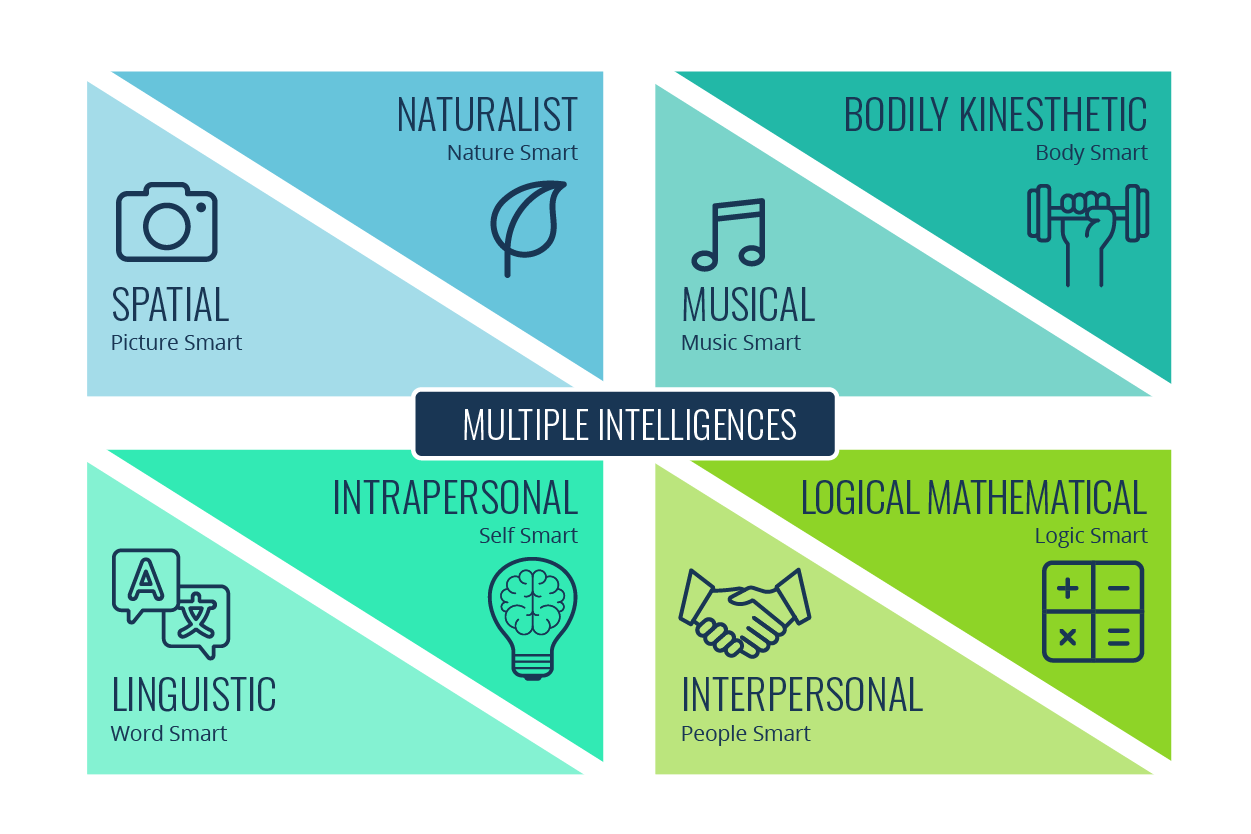
Gardner’s Eight Types of Intelligence
- Linguistic: the ability to grasp and communicate concepts by means of words and symbols.
- Logical / Mathematical: the ability to effectively use numbers and recognise patterns.
- Spatial: the capacity to observe and process information through the aspects of colour, line, shape, form, figure and space.
- Bodily-Kinesthetic: the ability to perform activities which require strength, speed, dexterity, hand-eye coordination and balance.
- Musical: the ability to perceive, interpret, transform and express oneself through various musical forms.
- Interpersonal: the ability to understand and easily relate with others.
- Intrapersonal: the ability to understand and regulate one’s own emotions and behaviour through introspection.
- Naturalist: the ability to recognise and classify the relationships between various species within the natural world.
Gardner’s Theory Today: Widely Used Yet Misunderstood
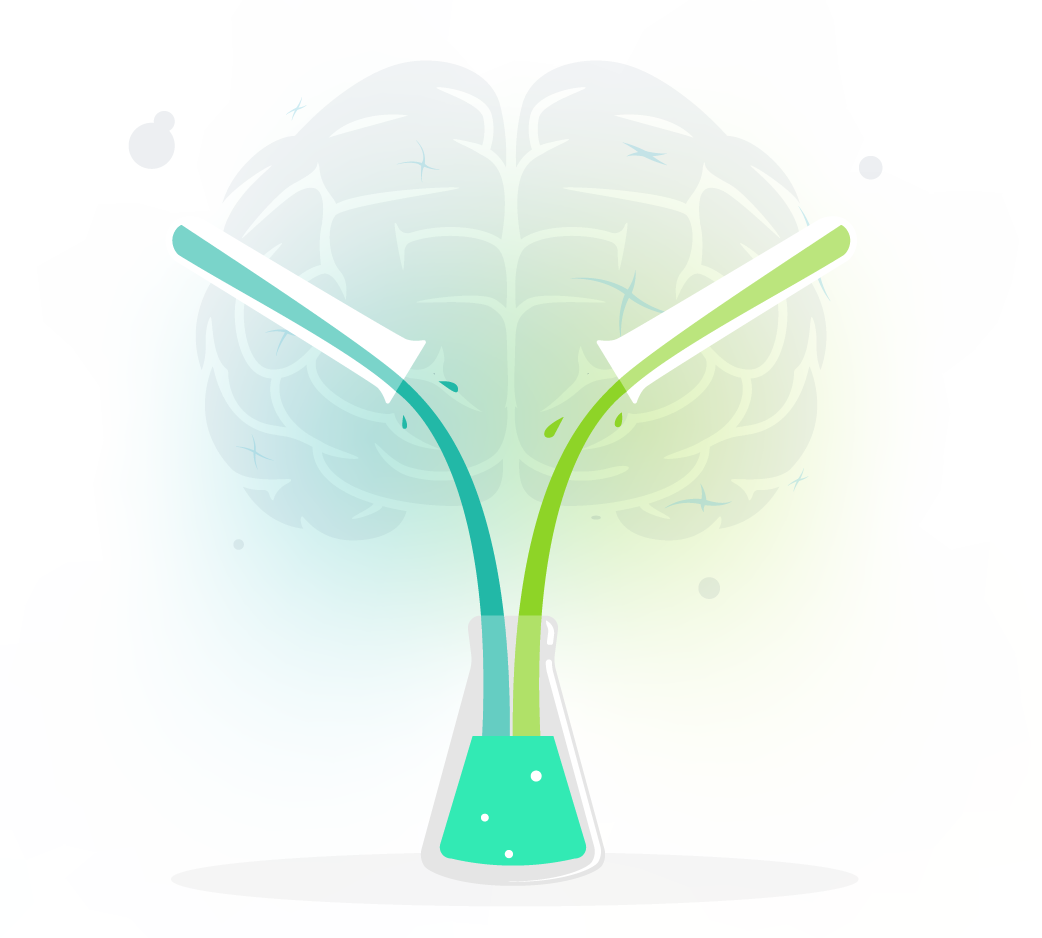
Presently, the theory of multiple intelligences helps instructors worldwide to transform their learning approach. However, the theory has also been subject to some misconceptions.
Over time, “multiple intelligences” has somehow been linked with the concept of “learning styles“. This controversial topic always causes a stir whenever it’s mentioned. However, the fact remains that there is no evidence to suggest that our self-defined learning styles (or preferences) have an impact on learning outcomes.
Perhaps this is why Gardner has been quick to distance his theory from the concept of learning styles. He objects to the notion that matching instructional methods to a student’s learning style leads to better outcomes.
Others have also criticised Gardner’s theory, suggesting that it confines learners to a particular type of intelligence, rather than recognising our multifaceted nature. However, Gardner is clear that we all possess multiple abilities to varying degrees.
Ultimately, Gardner’s theory emphasizes that all intelligences are equally valuable. Different situations require the use of different sets of intelligences. This is where we benefit from developing a range of abilities. As such, the multiple intelligences theory encourages a multi-faceted approach to learning.
In fact, studies confirm the impact of Gardner’s theory on learning. For instance, research conducted in 2010 found that an MI-based approach boosted learner engagement. Similarly, a 2015 study confirms that the theory can help significantly boost learning memory and comprehension.
Limitations of the Theory
Gardner’s theory is attractive because values traits that are sometimes neglected. Failing a standardised test shouldn’t be seen as the end of the world.
However, the theory is not without its detractors. The most common objection is that it suffers from a lack of empirical evidence.
Others also point out that the model fails to include other types of intelligence. For instance, a paper by McGuiness published in 2007, asserts that other psychologists before Gardner had already identified up to 150 intelligences.
Critics also argue that it’s difficult to isolate intelligence in the way that Gardner’s theory suggests. This approach conflicts with the widely held view that our abilities work together to form “general intelligence”.
Despite all these objections, the theory remains one of the most popular ideas in learning and development. It can help us to recognise the different strengths and weaknesses of our learners and employees. In turn, this can benefit and transform your training approach.
With this in mind, we’ve identified three key benefits associated with the theory of multiple intelligences. We’ll explore these in the next section of this article.
Multiple Intelligences Theory & Its Benefits for L&D
1. Achieve training impact by capitalising on learners’ strengths
 In a run for the best salesperson of the year, who is more likely to succeed? Is it the eloquent presenter with a knack for delivering the most persuasive spiels? Or the introspective listener who intuitively knows what the customer needs?
In a run for the best salesperson of the year, who is more likely to succeed? Is it the eloquent presenter with a knack for delivering the most persuasive spiels? Or the introspective listener who intuitively knows what the customer needs?
It is true that certain job roles do favor specific types of intelligence. However, this does not imply that one intelligence is superior over the other. What matters is how one applies their set of strengths to overcome various challenges. In this case, both employees have learnt to use their individual intelligences to achieve the same aims.
As such, the multiple intelligences theory tells us that both of these employees possess equally valuable strengths. No one is more capable than the other. As long as they embrace and nurture their natural strengths, they are both likely to succeed.
Understanding this can help you to adapt your training programme to achieve better results. You should take the time to discover your learners’ strengths and try to nurture them further. By doing this, you will drive deeper engagement and achieve better learning outcomes.
In fact, stats show that companies with a focus on maximising employees’ strengths have experienced a profit increase of up to 29%. Similarly, a Gallup poll finds that workers who use their strengths on a daily basis are 8% more productive and 6x more engaged!
2. Boost employee creativity by embracing an interdisciplinary learning approach
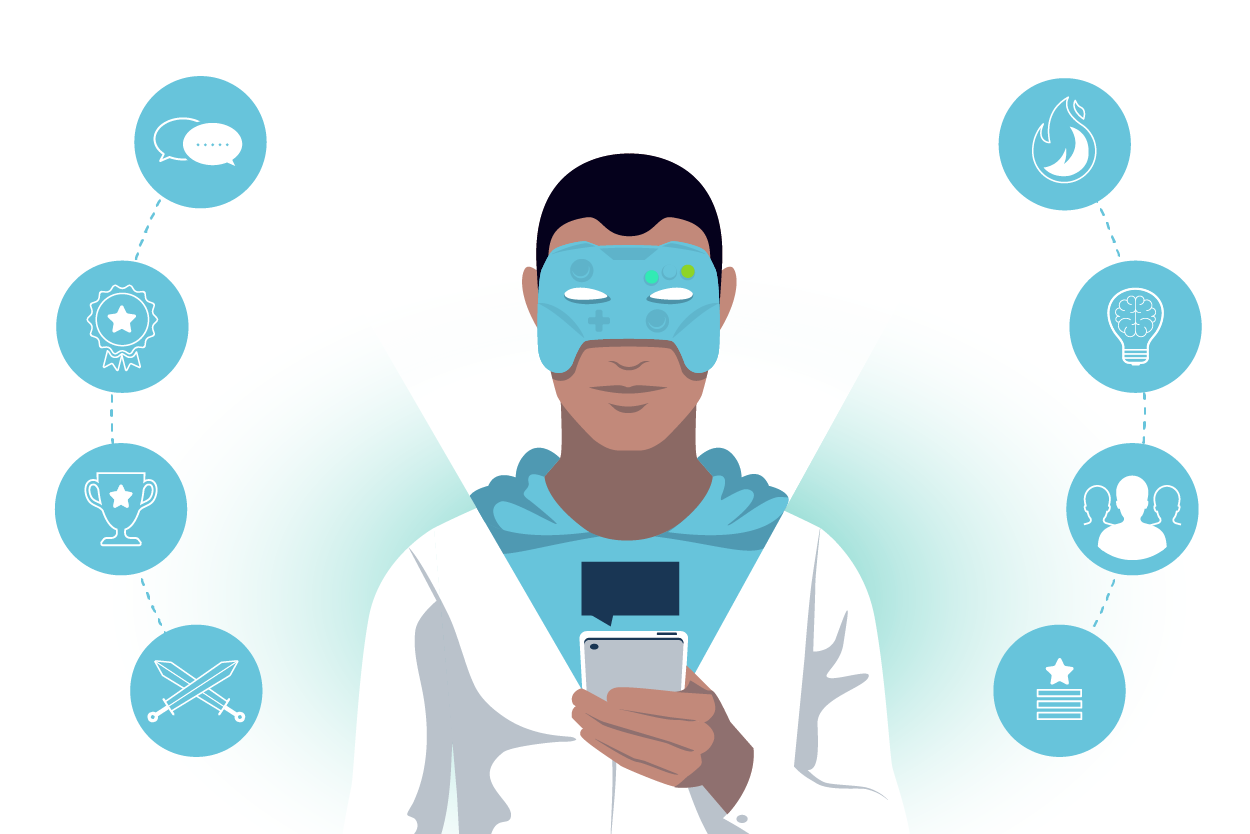 Creativity is sometimes easier to recognise than define. Such is the case with one scruffy-haired, German-born boy, who was first thought to be intellectually handicapped. This boy is Albert Einstein, now considered to be the most creative genius of all time.
Creativity is sometimes easier to recognise than define. Such is the case with one scruffy-haired, German-born boy, who was first thought to be intellectually handicapped. This boy is Albert Einstein, now considered to be the most creative genius of all time.
His “different way of thinking”, once dubbed a handicap, enabled him to make the most extraordinary discoveries.
Presently, CEOs consider creativity to be one of the most valued skills in the workplace. In fact, the World Economic Forum recently dubbed it one of the top 3 skills needed to drive business success. However, research shows that 78% of people think they are not living up to their creative potential. Ouch!
Gardner’s model encourages creative thinking by embracing an interdisciplinary learning approach. It does this by supporting different styles of learning and applying knowledge. This encourages learners to think outside the box, experiment with different approaches and forge new connections and associations.
Take this example. Let’s say you’d like to deliver training for your in-house retail team. These employees have varying degrees of kinesthetic, logical and interpersonal intelligence.
With this in mind, you could encourage creative thinking by incorporating a mix of tactile, social and critical thinking activities. This multi-faceted approach enables your learners to synthesize information in different ways.
3. Embrace learner diversity to create a truly inclusive and personalised training environment
 There is one lesson we can glean from Marvel’s greatest superhero team, The Avengers. From the Hulk and Black Widow to Tony Stark, each member leveraged their diverse backgrounds and skill sets to achieve epic wins.
There is one lesson we can glean from Marvel’s greatest superhero team, The Avengers. From the Hulk and Black Widow to Tony Stark, each member leveraged their diverse backgrounds and skill sets to achieve epic wins.
Diversity within teams is a powerful thing. In fact, a McKinsey study shows that companies with a more diverse workforce tend to perform better. It also demonstrates how inclusive practices boosts employee engagement and productivity. As such, it is no wonder why D&I initiatives are a top of mind priority for learning professionals.
Embracing D&I in learning means considering the individual needs of each learner. This is where the value of personalised learning comes in. Stats show that 94% of businesses consider personalised learning to be critical for success. What’s more, companies who implement personalised training programmes report as much as a 20% increase in sales.
The theory of multiple intelligences supports D&I by helping you recognise the diverse strengths of your employees. This will help you establish an inclusive learning space where employee differences are supported and valued.
Applying Gardner’s Theory of Multiple Intelligences in a Training Environment
At this point, we’ve established an overview of the MI model, its limitations and the key benefits for L&D. And now, we’ve got to the best part. Next up, we’ll look at how the theory of multiple intelligences can (and should!) inform your training programmes.
We’ve outlined the qualities of each intelligence in the context of training. What’s more, we’ve added some implementation ideas to help you get started!

1. Visual-Spatial
Learner Strengths: They like to think in terms of physical space and are good at visualising things. They are very aware of their physical environment. They are your chart, blueprint and diagram lovers in the workplace. Struggling to visualise learning goals? You can count on this colleague to help paint you a clearer picture!
Industry / Job Role: In the workplace, these could be your designers, architects, engineers or beauty consultants.
Implementation Tip: Develop learners’ visual-spatial abilities with learning content filled with rich visual media. Game mechanics (i.e. scorecards, leaderboards and badges) can amplify the visual appeal of your learning programme. What’s more, game mechanics have been proven to increase engagement by 48%!
2. Bodily-Kinesthetic
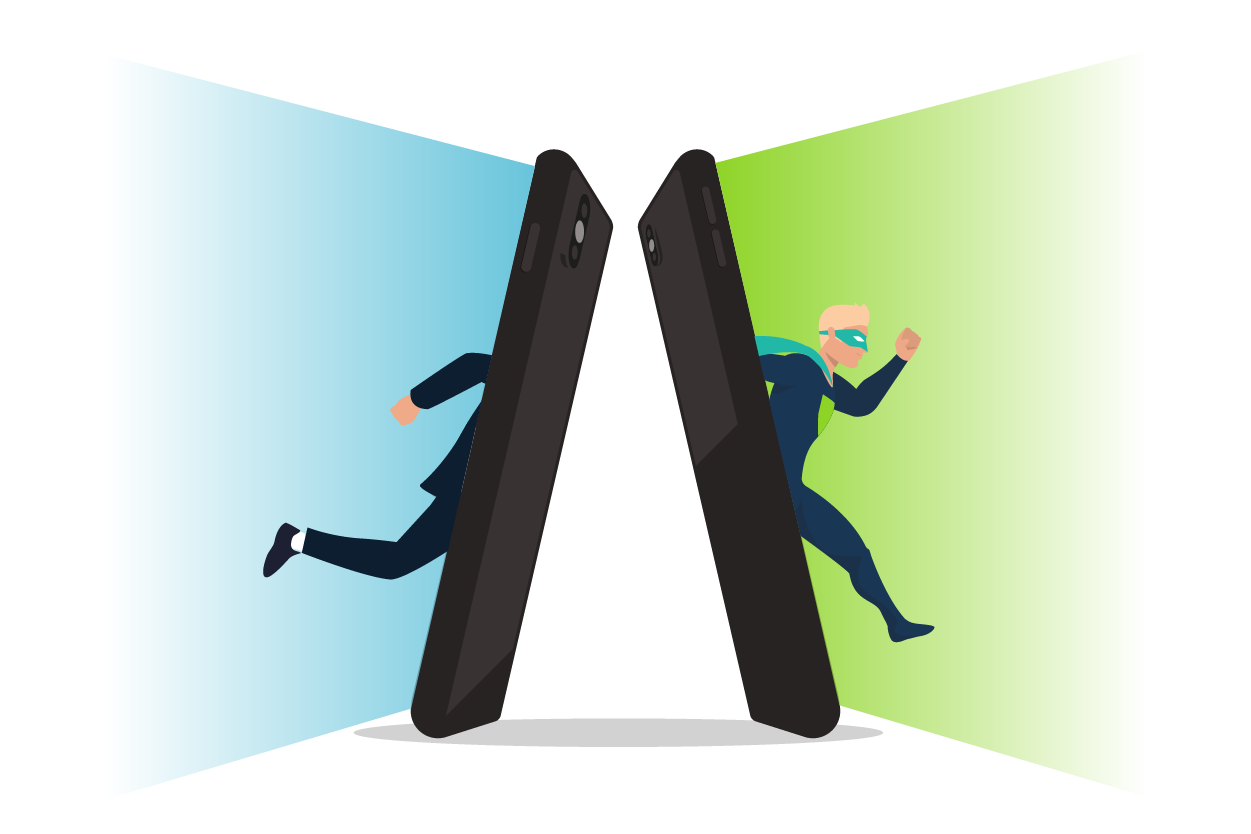 Learner Strengths: They exhibit a keen sense of body awareness and control. They enjoy movement, making things and engaging in hands-on activities. They usually possess excellent hand-eye coordination and dexterity. When it comes to events or activities requiring physical ability, these employees are your show stoppers.
Learner Strengths: They exhibit a keen sense of body awareness and control. They enjoy movement, making things and engaging in hands-on activities. They usually possess excellent hand-eye coordination and dexterity. When it comes to events or activities requiring physical ability, these employees are your show stoppers.
Industry / Job Role: Many of them work in industries which require dexterity or physical interaction. Examples include entertainers (dancers, actors or performance artists), service providers (mechanics, electricians or delivery men), fitness professionals (personal trainers, body builders or aerobics instructors) and those from the sporting world (coaches, physios or athletes).
Implementation Tip: Exercise a bodily-kinesthetic approach with hands-on training or practical assessments. Within an online platform, you can ask learners to create videos of themselves demonstrating or practicing a skill. What’s more, the use of a mobile microlearning approach can support their on-the-go lifestyles. Our authoring tool and mobile app offer a seamless way to design and deploy micro-modules for this kinesthetic learner.
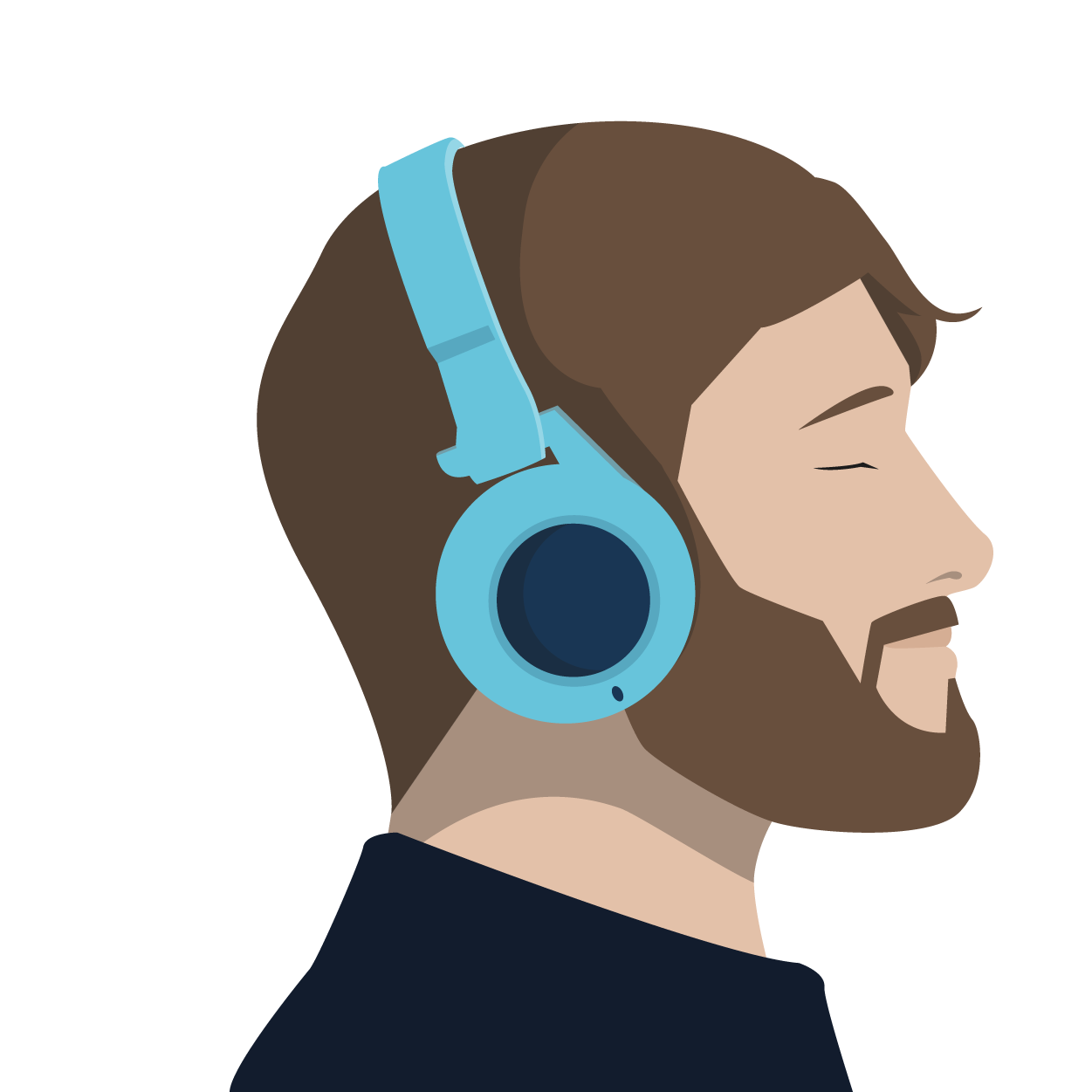
3. Musical
Learner Strengths: These learners are in tune with rhythm and sound. They have a “good ear” for music and are highly sensitive to different sounds in the workplace. They can easily connect feelings with sound. These employees are always ready with a playlist to help improve the office atmosphere.
Industry / Job Role: As you’d expect, these types of learners are typically found in the music industry. They could be singers, composers, music producers, acoustic engineers and so on.
Implementation Tip: Fill your learning environment with rich auditory media. For instance, utilise specific sounds and music connected to the subject matter. This is also an opportunity to incorporate ‘out-of-the-box’ activities. One way to do this is to have learners summarise what they’ve learned by writing a rap version of their notes. You could also have them share music playlists or covers on your social learning platform to express themselves.
4. Interpersonal
 Learner Strengths: Employees with this type of intelligence are natural empathizers. They are able to relate and communicate well with others. In the workplace, they are your social rockstars. They easily perceive their team members’ emotions, motivations and needs. They also have a knack for persuasion and influence.
Learner Strengths: Employees with this type of intelligence are natural empathizers. They are able to relate and communicate well with others. In the workplace, they are your social rockstars. They easily perceive their team members’ emotions, motivations and needs. They also have a knack for persuasion and influence.
Industry / Job Role: Interpersonal skills are extremely useful in any industry. But they are especially important in fields that demand a lot of interaction with people. Such fields include leadership roles, HR professionals, salespeople, customer service teams, and social workers.
Implementation Tip: Unleash your employees’ social powers by utilising social learning. The right social learning strategies can increase learning completion rates by 85%! What’s more, this approach helps establish a knowledge-sharing culture. This has been proven to improve creativity, learning and performance. In fact, stats show that it boosts productivity by up to 40%! Growth Engineering’s Impact Suite offers informal learning tools such as Clubs to get those social sparks flying!
5. Intrapersonal
Learner Strengths: Individuals with this type of intelligence are in touch with their emotional states, feelings and motivations. These are the employees who are in constant pursuit of Epic Meaning. They enjoy self-reflection and introspection. As such, they tend to be wise and insightful.

Industry / Job Role: This type is found in any industry or field. But what sets them apart is their purpose at work. They are more likely to work for organisations whose aims align with their own. But more often, they thrive on roles that require high intuition. These include fields in psychology, counselling, creative writing and entrepreneurship.
Implementation Tip: Make things more meaningful for this learner type with Growth Engineering’s Discovery Method. This online learning tool encourages learners to reflect on their experience. In fact, research shows that including reflection in the learning process boosts performance by 23%! You should also utilise their wisdom by getting them to share their personal experiences with fellow team members.
6. Linguistic-Verbal
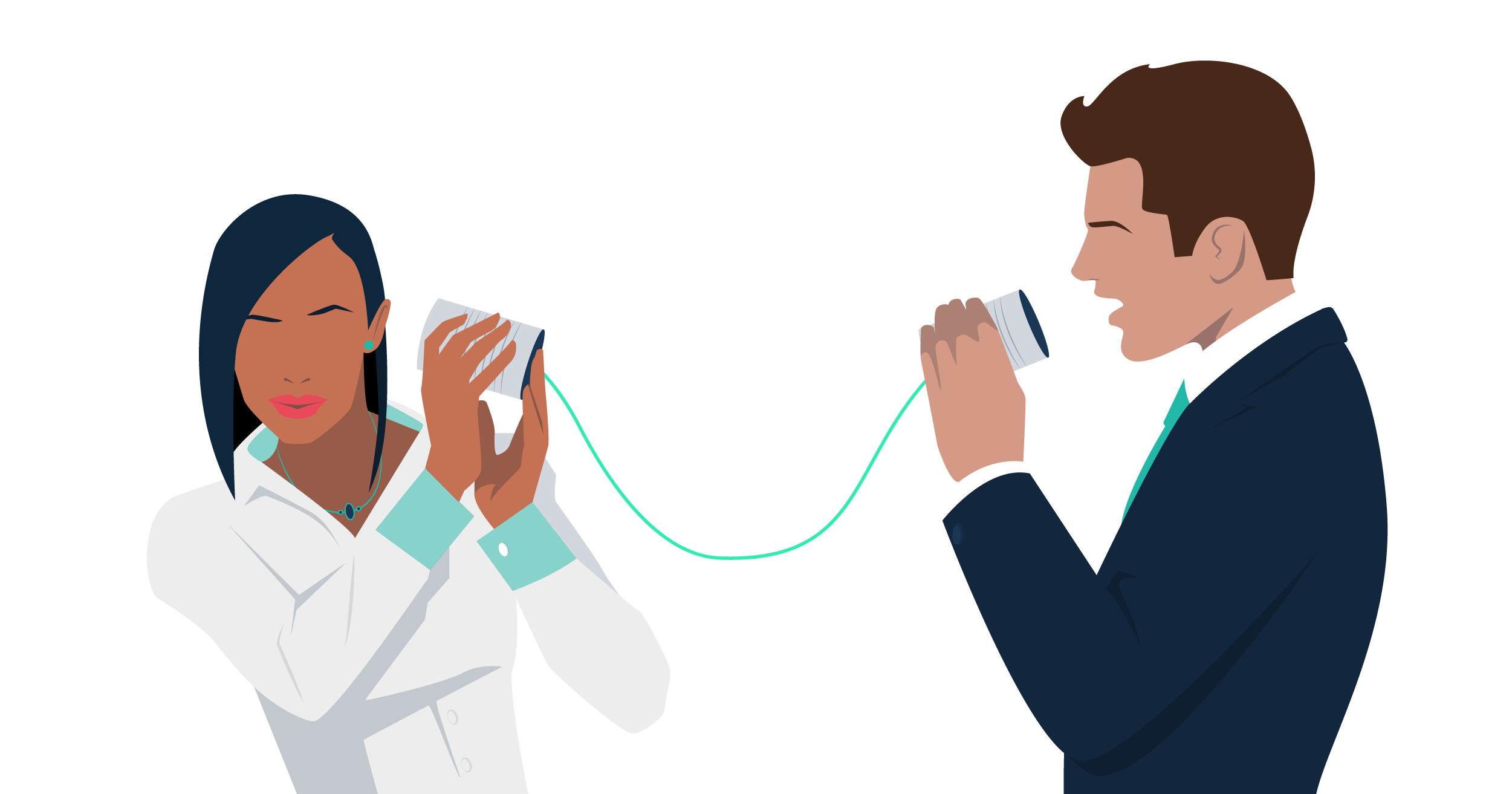 Learner Strengths: Employees who excel in this area have a great command of language. Got a client to impress? These verbal wizards can captivate audiences with their communication skills. They excel in holding debates or delivering persuasive speeches. These are your employees who easily understand and recall verbal or written instruction. They also tend to excel in writing and memorising information.
Learner Strengths: Employees who excel in this area have a great command of language. Got a client to impress? These verbal wizards can captivate audiences with their communication skills. They excel in holding debates or delivering persuasive speeches. These are your employees who easily understand and recall verbal or written instruction. They also tend to excel in writing and memorising information.
Industry / Job Role: As this is the most universal type of intelligence, you are likely to find them across a wide variety of industries. They are especially concentrated in communication roles. Examples include marketeers (for instance, PR specialists or copywriters), broadcasters (for instance, journalists, pundits or hosts) and sales professionals.
Implementation Tip: A blended learning approach can help learners improve their oral and written communication skills. Research shows the benefit of blended learning. This medium of instruction lets these learners participate in the joy of in-classroom discussions. At the same time, blended learning’s online component allows them to benefit from written material.
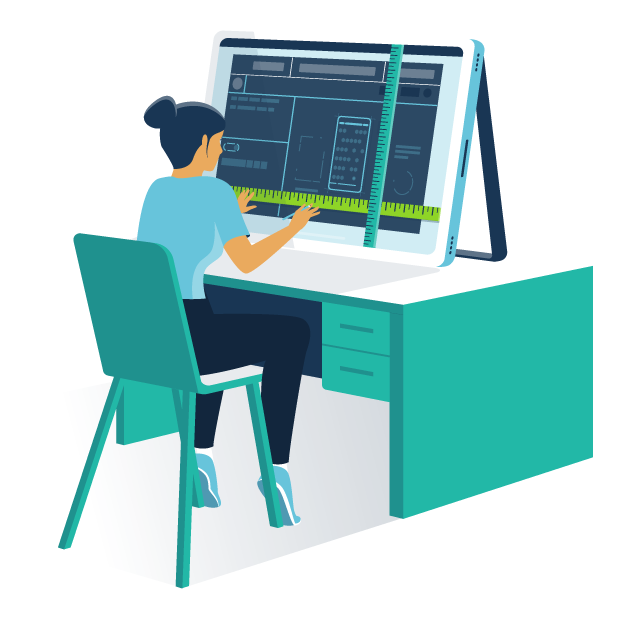
7. Logical-Mathematical
Learner Strengths: These learners are able to recognise patterns and synthesise complex information with ease. These are your employees who enjoy thinking about abstract concepts, asking cosmic questions, experimenting and solving puzzles. They usually possess great problem-solving skills.
Industry / Job Role: No doubt having this intelligence is crucial across a wide range of industries. After all, the ability to analyse and solve a variety of problems is a necessary quality needed for organisations to thrive. In particular, these skills are expected in roles that deal with strategy and problem solving. As such, these individuals will typically be in your leadership team or could be IT and finance professionals, researchers, analysts, and engineers.
Implementation Tip: Develop your learners’ analytical skills by incorporating logic games or problem solving tests within your learning content. These learners will thrive on self-directed learning. This allows them to go over your training material at their own pace. This will give them the necessary room to explore more learning resources. As such, make sure your training programme has a well-structured and comprehensive content library.
Final Words
Each employee should be celebrated for their unique capabilities and strengths. Howard Gardner has provided a framework to help us do this. As discussed, Gardner’s theory of multiple intelligences can help you recognise the natural abilities of your team.
However, this doesn’t mean that you should construct your learning approach to cater for all seven types of intelligence. Instead, the purpose of this model is to help you rethink your existing L&D strategies. It is a good starting point to get you to consider new and creative ways to deliver a better learning programme.
This theory can help you design training strategies that will develop the strengths of your employees and allow you to capitalise on them. It can also help you evaluate the appropriate learning formats to include in your training approach.
Doing this helps to establish an inclusive learning space where each employee feels valued and inspired. As a result, you’ll be able to construct your own superhero squad of learners, eager to engage and assist in the fight against dull online learning!
Keen on getting your hands on more learning theories and models? Download our guide ‘Using Learning Theories & Models to Improve Your Training Initiatives’!

